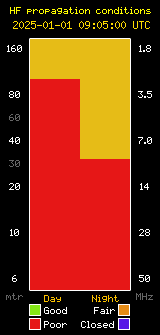The King and I
Submitted by Bill – W1UUQ – Seldom in ones lifetime do we get very close to royalty. Outside of a small group of like professionals I try to avoid any political event or pomp with any head of state. That is until I served in the upper NE corner of Thailand on the Laotian border in the mid 1960’s. On a few occasions the King of Thailand, Bhumibol Adulyadej, made visits to NE Thailand for official ceremonies. As part of the Military Advisory Group (MAGTHAI) I would have access to official Thai events and invited to attend as a foreigner (falang) with the military. The King was granted HS1A in 1989 but as far back as the mid 1960’s we knew the HS1A call sign was always reserved for the King. During the mid-sixties ham radio was out of bounds within the local population except for a small number government officials and ex-pats, mostly Americans. As Fred Laun, K3ZO, points out in the ARRL release the King would get on 2 meters only. I operated as HS3WT (my initials) along with a handful that kept ham radio going even though it was not recognized by the ARRL. The war in SE Asia was in full swing as the US built up the Thai regional forces supporting US Forces in Vietnam and the so called secret-war in Laos. Radio was always viewed with great suspicion by local officials regardless of affiliation so it was best to have close contact with local military officials. But as Americans if you had an official US military or government connection it made the process much easier. There was no reciprocity with the US during this period. The King and I were both about the same age and both of us were born in Massachusetts. If I ever had the opportunity to speak with the King there was plenty to talk about. Usually I would team up with Don Riebhoff, K7ZZ/HS3DR, (now deceased). Typically a local ceremony in this region was void of any press or foreigners although a US Embassy official would be represented. These events were strictly for the Thai people and it was best to simply remain unseen in the background and stay quiet. The King in military uniform and his wife Queen Sirikit would usually arrive in his Avro twin at the UdonThani Royal Thai Air Base then helicopter to the local… Continue reading









